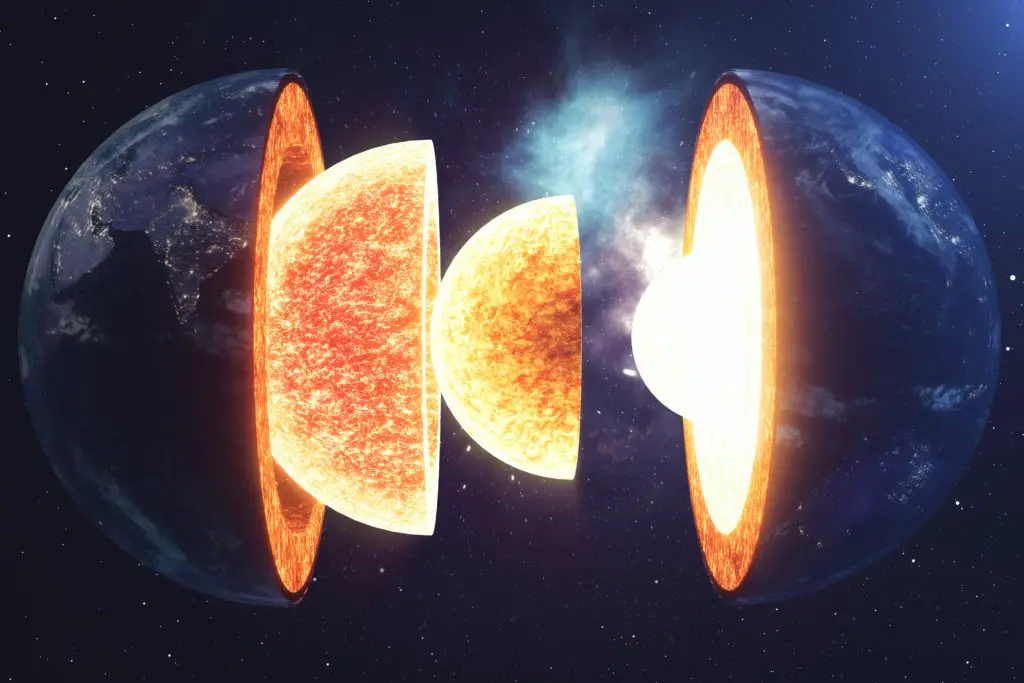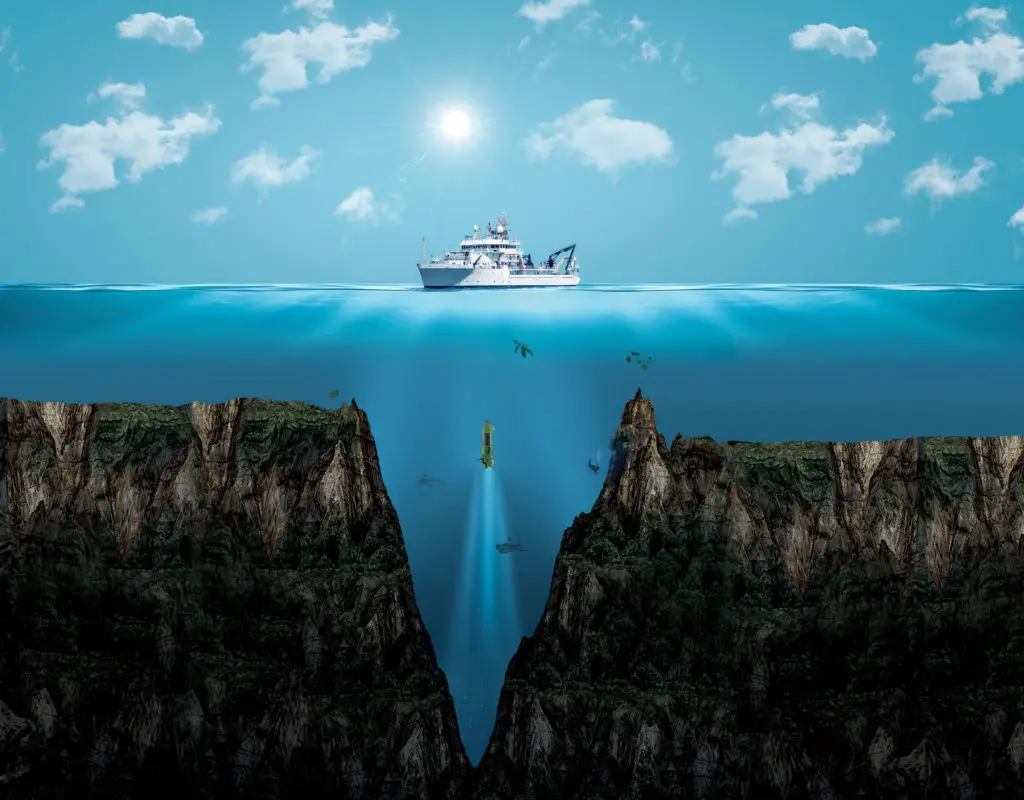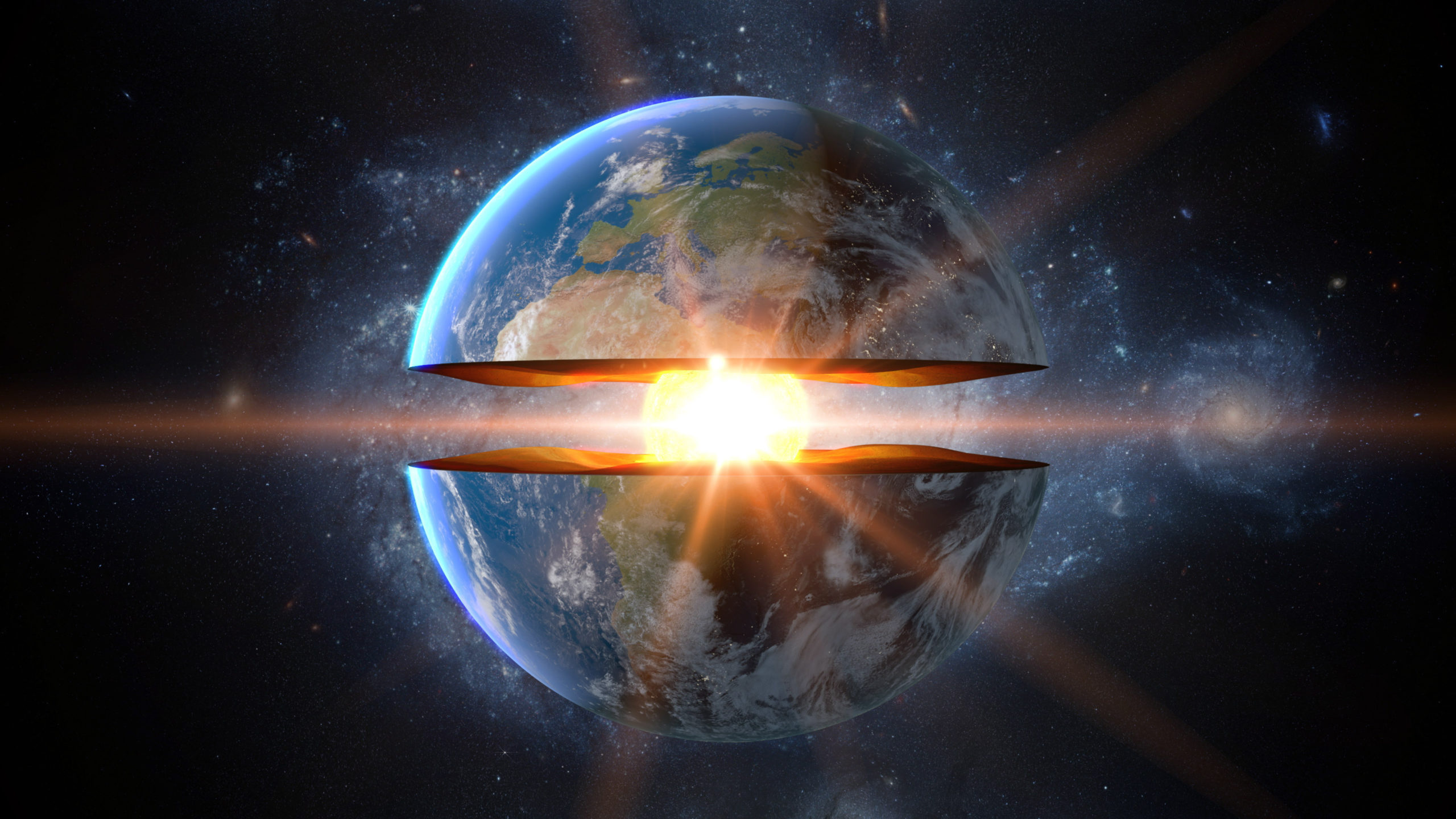Beneath the familiar landscapes that cover our planet, a world of enigmatic structures and phenomena lies hidden from view. Earth, a dynamic and ever-evolving sphere, harbors mysteries that have intrigued scientists and explorers for centuries. From colossal caverns to puzzling geological formations, let’s embark on a journey to uncover the secrets of Earth’s hidden structures.

Lurking Deep Beneath: The Mysterious Behemoth Blobs in the Earth’s Mantle
Lying beneath Africa and the Pacific in the lowermost part of the Earth’s mantle, surrounding the Earth’s core, there are two gigantic blobs that occupy around three to nine percent of the volume of the Earth. These massive structures, known as large low shear velocity provinces (LLSVPs), have been a subject of great fascination and intrigue among scientists.
Unfortunately, there are no direct ways of seeing the Earth’s core, at least without being burned to a crisp or fighting your way through the mole people. The deepest hole ever dug, sweetly dubbed the “entrance to hell,” reached 12,263 meters (40,230 feet), still a long way from breaking through the Earth’s crust to the layers beneath. However, scientists have developed a technique known as seismic tomography, which allows them to look under the Earth’s surface effectively.
Seismic tomography involves measuring the tremors from earthquakes that occur. Waves of energy are sent out in all directions, and by measuring these tremors from several locations at the surface, scientists can create a map of the Earth’s interior. The waves move through rocks and liquids within the Earth at different speeds due to their different densities, allowing geologists to determine the type of material the waves are traveling through.
It was through seismic tomography that the two large and strange structures, the LLSVPs, were discovered. In these areas, waves travel more slowly than through the surrounding lower mantle. One of these blobs, known as “Tuzo,” exists beneath Africa and is thought to be about 800 kilometers (497 miles) in height – that’s approximately 90 Mount Everests!
The Hunt for Answers: What are these Blobs?
While the existence of these blobs is now well-documented, their exact nature remains a mystery. However, scientists have put forward several sound hypotheses to explain their origins.
One leading hypothesis suggests that the LLSVPs are piles of oceanic crust that have been subducted and accumulated over billions of years. In this scenario, dense oceanic crust sinks into the Earth’s mantle during tectonic plate movements and accumulates to form these large blobs.

But there’s another, slightly more intriguing theory. Some scientists have proposed that the LLSVPs are remnants of an ancient planet. Imagine a hypothetical Mars-sized planet called Theia that collided with Earth around 4.5 billion years ago, causing enough rock to be thrown off and form the Moon. This theory suggests that the blobs are actually pieces of Theia’s mantle that got mixed in with Earth’s during the collision.
In 2021, a team of researchers conducted simulations to test this hypothesis. The results indicated that Theia’s mantle could survive if it were only 1.5 to 3.5 percent denser, adding further support to the idea that these blobs may indeed be fragments from a long-lost ancient planet.
These intriguing findings bring us one step closer to unraveling the enigmatic origins of Earth’s mysterious blobs and the untold stories they hold from the depths of our planet’s history.
Exploring Further
While we may not have all the answers about the large blobs in the Earth’s mantle just yet, there are other fascinating topics in geology and earth science that you might find intriguing:
- Plate Tectonics: Plate tectonics is the fundamental theory that explains the movement of the Earth’s lithospheric plates. These enormous pieces of Earth’s crust are constantly shifting, colliding, and sliding past each other. Plate boundaries are hotspots for geological activity, including earthquakes, volcanoes, and the creation of mountain ranges. Understanding plate tectonics helps us comprehend the dynamic forces shaping our planet’s surface.
- Earthquakes and Seismology: Earthquakes are some of the most powerful and destructive natural events on Earth. Seismology, the study of earthquakes and seismic waves, provides insights into the Earth’s interior. Scientists use seismometers to monitor and analyze ground movements, helping to predict earthquakes and understand the structure of the Earth’s core and mantle.
- Volcanology: Volcanoes offer a glimpse into the Earth’s fiery heart. Studying volcanic eruptions and the formation of volcanic rocks helps us comprehend the Earth’s geothermal activity and its impact on the environment. Volcanic eruptions have played a significant role in shaping landscapes and influencing climate patterns.
- Mineralogy and Gemology: Earth is a treasure trove of minerals and gemstones. Understanding the properties and formation of minerals is essential not only for geological research but also for industries like mining and jewelry. The study of gems like diamonds, emeralds, and sapphires provides insights into the Earth’s geological history.
- Geomorphology: Geomorphology examines the processes that shape the Earth’s surface, including erosion, weathering, and sedimentation. It helps us understand the creation of landforms like mountains, valleys, and coastlines and how these landscapes change over time.
- Paleontology: The study of fossils and ancient life forms, paleontology allows us to explore Earth’s biological history. Fossils provide clues about the evolution of species, the Earth’s climate, and the dynamics of ecosystems throughout geological time.
- Climate Science: Earth’s climate is a complex and interconnected system influenced by numerous factors, including greenhouse gases, ocean currents, and solar radiation. Climate scientists study these interactions to better understand climate change, its effects, and how we can mitigate its impact.
- Environmental Geology: This field focuses on the interaction between geology and the environment, including issues such as groundwater contamination, land use planning, and natural disaster management. Environmental geologists work to safeguard our planet and its resources.
- Planetary Geology: Beyond Earth, planetary geology extends our understanding of geological processes to other celestial bodies. Studying the geology of planets like Mars, the Moon, and Venus provides insights into the broader processes that shape rocky planets in our solar system.
Each of these fields offers a unique perspective on the Earth and its history. They provide opportunities for exploration, discovery, and a deeper appreciation of the intricate processes that have shaped our planet and continue to influence its future. As we delve into these topics, we uncover the wonders of the natural world and the incredible diversity of Earth’s geological phenomena.
Unveiling Earth’s Hidden Wonders
Unveiling Earth’s hidden wonders reveals a realm of mysteries hidden beneath the surface, from deep-ocean trenches to subterranean caves and the secrets of subterranean lakes and rivers.
- The Mysterious Deep-Ocean Trenches: Hidden beneath the ocean’s depths are vast trenches, some of which plunge deeper than the highest mountains rise. The Mariana Trench, for example, reaches a mind-boggling depth of over 36,000 feet (nearly 7 miles). These trenches are formed by the movement of tectonic plates, where one plate slides beneath another, creating deep chasms in the ocean floor. They remain some of the least explored and most mysterious places on Earth.
- The Intricate World of Caves: Beneath the Earth’s surface, a hidden realm of caves and underground chambers sprawls. Some caves, like Mammoth Cave in Kentucky, stretch for hundreds of miles and contain stunning formations of stalactites and stalagmites. These underground labyrinths are often carved by the slow dissolution of limestone by water, and they have captured the imaginations of explorers and scientists for centuries.
- Subterranean Lakes and Rivers: Deep underground, hidden from sunlight, flow rivers and lakes of fresh water. These subterranean water bodies can be extensive and provide vital resources for ecosystems and communities above. Exploring and understanding these hidden aquifers is crucial for managing Earth’s water resources sustainably.
- Mysterious Sinkholes: On the surface, our planet’s landscapes can sometimes collapse suddenly, forming sinkholes. These natural pits can appear unexpectedly and vary in size from small depressions to massive holes that swallow entire buildings. Sinkholes are the result of various geological processes, including the dissolution of soluble bedrock and the collapse of underground cavities.
- Volcanic Caves: Beneath active volcanoes, a world of fiery beauty and danger unfolds. Lava tubes, formed by flowing lava, create intricate cave systems. These caves can be treacherous, with scorching temperatures and unstable terrain, but they also hold the potential for unique geological insights.
- The Hidden World of Diamonds: Deep within the Earth’s mantle, under immense pressure and heat, diamonds form over millions of years. Mining operations delve deep into the Earth’s crust to extract these precious gems. The journey to uncovering these hidden treasures is fraught with challenges, both scientific and logistical.

Remember, our planet is full of wonders waiting to be explored, and the more we learn about it, the greater our understanding of our place in the vast universe.

This Site Was Inspired By An Interest in Protecting the Environment:
We had the privilege and joy of learning from Dr. Charlie Stine who instilled a love for the natural world through incredible field trips with the Johns Hopkins Odyssey Certificate program in Environmental Studies. At the time, the program was endorsed by the Maryland Department of Natural Resources. Sadly, after Dr. Stine retired, the program was phased out. We hope that we honor his legacy by shining a bright light on environmental issues and sharing good news about the success of various conservation programs when possible.
